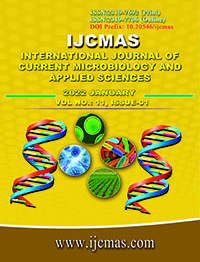


 National Academy of Agricultural Sciences (NAAS)
National Academy of Agricultural Sciences (NAAS)

|
PRINT ISSN : 2319-7692
Online ISSN : 2319-7706 Issues : 12 per year Publisher : Excellent Publishers Email : editorijcmas@gmail.com / submit@ijcmas.com Editor-in-chief: Dr.M.Prakash Index Copernicus ICV 2018: 95.39 NAAS RATING 2020: 5.38 |
Agriculture plays a key role in overall economic and social wellbeing of the specially developing countries. Now it is the right option to increase the quality and quantity of food production through the technological and managerial interventions like crop growth and yield prediction models. Agricultural models are mathematical equations that represent the reactions that occur within the plant and the interactions between the plant and its environment. The model simulates or imitates the behaviour of real crop by predicting the growth of its components, such as leaves, roots, stems and grains. Thus, a crop growth model not only predicts the final state of total biomass or harvestable yield, but also contains quantitative information about major processes involved in the growth and development of a plant. Crop Growth Simulation models are a formal way to present quantitative knowledge about how a crop grows in interaction with its environment. Using weather data and other data about the crop environment, these models can simulate crop development, growth, yield, water, and nutrient uptake. Crop models are mathematical algorithms that capture the quantitative information of agronomy and physiology experiments in a way that can explain and predict crop growth and development. They can simulate many seasons, locations, treatments, and scenarios in a few minutes. Crop models contribute to agriculture in many ways. They help explore the dynamics between the atmosphere, the crop, and the soil, assist in crop agronomy, pest management, breeding, and natural resource management, and assess the impact of climate change.
 |
 |
 |
 |
 |